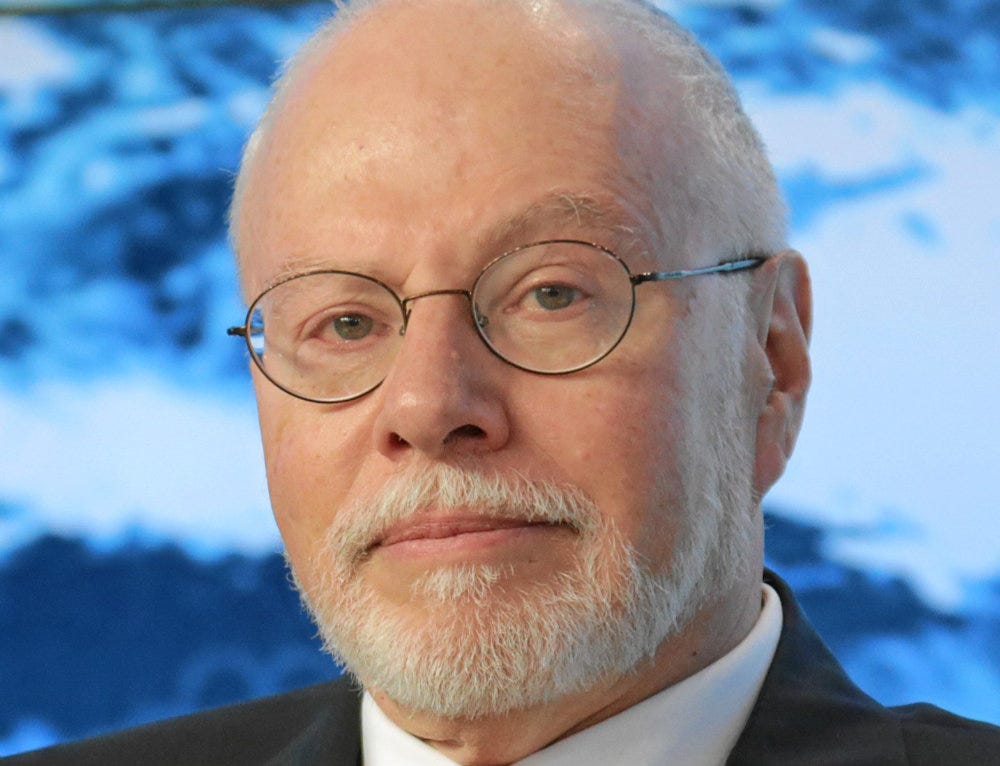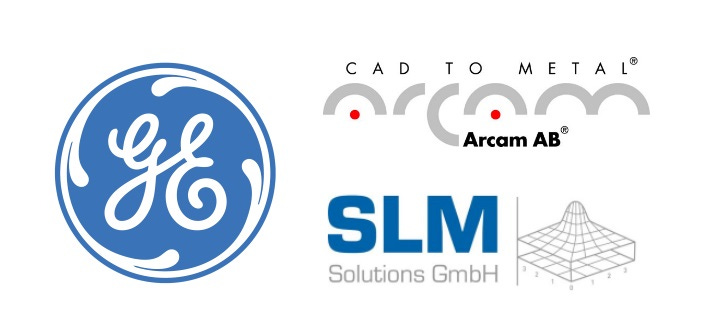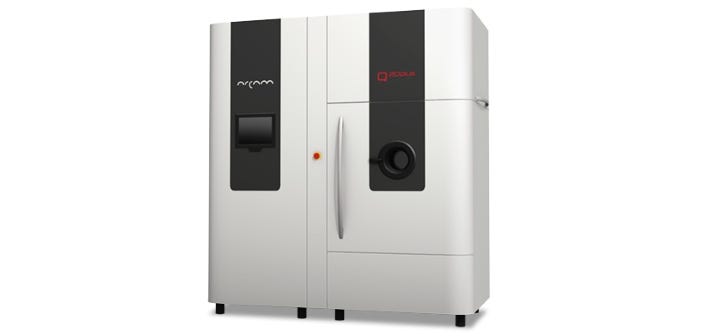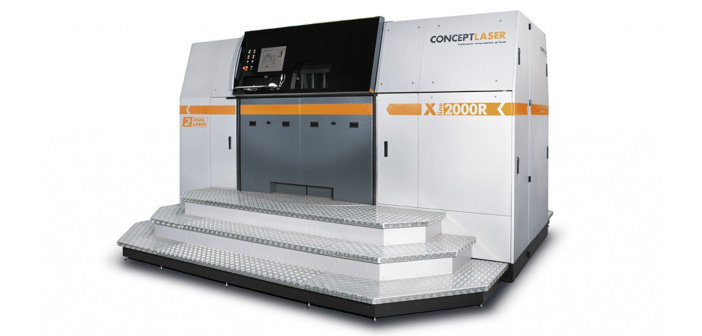Overplayed bid — the 2016 GE’s failed SLM Solutions takeover
The infamous bidding war that nearly drowned today’s metal AM leader
This is one of those stories where one person’s decision changes the lives of many others.
This is one of those stories where greed — or a “strategy focused on maximizing profits” — backfires and causes more harm than the sum of all expected benefits.
This is one of those stories where one person’s loss turns out to be another’s gain.
Eight years ago — on September 6, 2016 — one of the most extraordinary stories in the Additive Manufacturing industry began.
General Electric — one of the world’s largest industrial conglomerates — announced its intention to acquire two leading 3D metal printer manufacturers: Sweden’s Arcam AB and Germany’s SLM Solutions Group AG — for a total of $1.4 billion.
Although the news itself was sensational — this was to be the first such large and prestigious acquisition in the history of the industry (until then, only 3D companies had been acquiring each other) — what happened in the following months was incomparably more intriguing.
It was classic Alfred Hitchcock — first, an earthquake, and then the tension kept rising.
And it went like this…
The First Offer
GE was one of the pioneers in using 3D printing technology to manufacture end-use parts in the aviation industry. The company also organized highly popular competitions — challenges for engineers and designers, encouraging them to push the boundaries of designing modern parts optimized for additive manufacturing.
However, in September 2016, GE decided to go much further, announcing its intention to buy two leading 3D metal printer manufacturers at the time.
The rumor had it that GE wanted to order „a hundred” 3D printers for its own needs, but when it learned their price, it concluded that it might as well buy their manufacturers and start producing and selling them itself.
At least, that’s what the rumor said…
In any case, the choice of SLM Solutions and Arcam made perfect sense — they represented different, but complementary, technologies.
Arcam AB was a Swedish company, the creator of innovative 3D printing technology from metal powder using an electron beam. Their machines were mainly used in the aviation and medical industries. In 2015, the revenue was nearly $68 million, with a workforce of 285 employees.
Arcam was a publicly traded company, so GE offered a price of 285 SEK per share, translating into an offer of around $685 million.
SLM Solution Group was a German company whose operations extended far beyond the borders of its country. The use of SLM (Selective Laser Melting) technology in manufacturing parts resulted in collaborations with many companies in the aviation and automotive industries worldwide. The company’s revenue in 2015 was nearly $75 million, with 260 employees.
SLM Solutions was also publicly traded. To acquire it from shareholders, GE offered around $762 million.
In a press release, GE announced that it was in the final stages of formalizing the acquisitions. The conglomerate stated that as soon as the agreements were signed, all documents would be publicly available for review.
It looked like a done deal.
Everyone was so wrong…
Enter Paul Singer

Unexpectedly, Paul Singer — a billionaire owning over 20% of SLM Solutions — decided to disrupt GE’s plans. On October 20, 2016, his hedge fund, Elliott Management Corp., announced its intention to block the transaction, arguing that it was “not in the best interest of the company’s shareholders.”
Paul Singer, whose investment funds were valued at $2.2 billion by Forbes at the time, was known for challenging large international corporations — even states.
When Canon Inc. tried to acquire a stake in Axis Communications AB, the billionaire refused to sell his shares, thwarting the entire plan. When competing investment fund EQT Partners AB attempted to acquire the Swedish IT company Industrial & Financial Systems IFS AB, Singer’s fund offered an additional premium to the remaining shareholders who agreed to accept his bid.
He also bought up the debts of several Latin American countries, using them in negotiations to secure additional funds from Peru and Argentina.
And in Autumn 2016 he decided to stand in GE’s way…
The preliminary agreement between GE and SLM Solutions set the price for the German 3D printer manufacturer’s shares at €38 each. Singer began buying up shares, driving the price up to €39.49 per share.
As a result, SLM Solutions’ share price was driven to more than double its level from the previous year, and the company was valued at around €710 million (market valuation).
Singer’s statement complicated the situation significantly because November 24 was the deadline for SLM Solutions’ shareholders to accept GE’s offer. GE announced it would not raise the purchase price or extend the offer deadline.
Importantly, that same week GE agreed to extend the deadline for shareholders to decide on selling shares in the second company it wanted to acquire — Arcam AB. Arcam’s deadline was initially October 14 but was eventually extended to November 1.
GE’s Hard Play
On October 24, 2016, GE announced that it was walking away from the negotiation table and ending talks about acquiring SLM Solutions.
The SLM Solutions acquisition was over.
It turned out that talks with Arcam were also not proceeding smoothly. The initial decision deadline had to be extended to November 1 because only 40% of Arcam’s shareholders were willing to sell the company to the Americans — while the remaining shareholders raised objections.
Among them was… Paul Singer, who owned 10.14% of Arcam. For the acquisition to be possible, GE needed to acquire at least 90% of the shares. Without Singer, GE could only achieve a maximum of… 89.86%.
What was supposed to be a great technological revolution and a new beginning in low-volume metal production ended up with a huge sense of disappointment and wasted opportunity.
While shareholders might have been more or less pleased — with the share prices of both companies rising in the end — the management of both firms was devastated…
In October 2016, I unofficially learned that, before Singer’s announcement blocking the deal, the Germans at SLM Solutions were convinced they were already part of GE and were planning future actions solely in the context of collaboration with the Americans.
Apparently, morale in the company was terrible…
Soon, the same sentiment would affect the instigator of the whole mess — Paul Singer.
GE upsets the table and announces the acquisition of Concept Laser
On October 27, 2016, GE announced the acquisition of Concept Laser, a direct competitor of SLM Solutions based in Germany. Moreover, GE decided not to give up on Arcam and raised its purchase offer, hoping to change the minds of the current owners.
The initial purchase amount for SLM Solutions and Arcam was set at $1.4 billion. GE spent just over 40% of that amount, investing $599 million in Concept Laser. The conglomerate acquired 75% of the company’s shares but announced plans for a full acquisition in the following years.
Allegedly, while GE’s decision to withdraw from talks about acquiring SLM Solutions greatly surprised Paul Singer, the information about the Concept Laser transaction shocked him. Allegedly.
Unlike SLM Solutions and Arcam, Concept Laser was not a publicly traded company, and GE acquired the shares from private owners. Under the signed agreement, GE established a new division at Concept Laser’s former headquarters in Lichtenfels.
Concept Laser was a leading manufacturer of 3D metal printers, specializing in machines used mainly in the aerospace, medical, and dental industries. Its 3D printers operated using patented Laser Cusing technology, a derivative of SLM.
At the time of acquisition, the company employed over 200 people. In August 2016, Concept Laser reported an 88% year-over-year increase in machine sales.
Meanwhile, GE continued negotiations with Arcam regarding the acquisition. These talks also hit a deadlock due to Singer, who was trying to force the conglomerate to offer better financial terms. While Singer overplayed his hand with SLM Solutions, he was willing to make significant concessions with Arcam.
GE also agreed to lower the required acquisition threshold to 75%, down from the previous 90%. Additionally, to help shareholders make the “right” decision, GE raised the price per share from 285 SEK to 300 SEK, offering a total of $696 million.
The acquisition of Arcam was completed in mid-November 2016.
How did the stock market react to the news? Arcam’s shares jumped by +8.7%, while SLM Solutions fell by -13%.
This was another blow to the German company, which, due to Paul Singer’s actions, not only lost the unique opportunity to join GE but also significantly decreased in value.
The Aftermath
Since then, the stories of the companies have taken two very different paths.
The history of Arcam and Concept Laser under GE helm is rather mundane. The companies were gradually integrated into GE’s structure under the GE Additive banner. They strengthened their market position by introducing new models of machines, expanding functional capabilities.
In October 2022, GE Additive announced its entry into Binder Jetting technology, which it is actively developing.
In April 2024, after GE split into three public companies (GE Aerospace, GE Vernova, and GE Healthcare), GE Additive became part of GE Aerospace and was rebranded as Colibrium Additive.
Finally, both the Concept Laser and Arcam EBM legacy brands have been retired.
SLM Solutions’ story was much more convoluted. For a long time, their sky was overcast with dark clouds…
On January 23, 2017 — three months after GE fiasco — the company dismissed CEO Dr. Markus Rechlin and replaced him with Uwe Bogershausen — the company’s former CFO. This marked the definitive end of Rechlin’s career at SLM Solutions, as he was also removed from the supervisory board.
Rechlin had started working with SLM Solutions in 2013, overseeing areas such as R&D, procurement, production, and sales. In 2011 — two years before Rechlin joined — the company sold only 7 3D printers. By 2014, a year after he took charge, that number had increased to 49, and in 2015 to 102.
The first quarter of 2016 was even more promising. SLM Solutions received orders for 25 machines — 8 more than in the same period the previous year. Revenue increased by +63%.
Nevertheless, Rechlin lost his job…
In 2017, SLM Solutions signed a contract to deliver 15 systems to the Italian company BeamIT and 70 systems to an unnamed client in Asia. The order was expected to range from €31 million to €48 million, depending on the final decision regarding the machines purchased.
Most of the order was to consist of the SLM 280 model. The contract was to be completed by 2020. The 70 machines contracted were more than SLM Solutions sold in the entire first half of 2017.
Unfortunately, things went south from there…
The financial results for the first quarter of 2019 were disastrous. The company reported revenue of €7.3 million, a 51% drop compared to the first quarter of 2018. It sold only 7 3D printing systems, while the previous year it had sold 15.
Paul Singer reappeared on the horizon — this time rescuing SLM from financial collapse. In early 2019, the company increased its share capital by 10% — from €17.9 million to €19.7 million. These shares were acquired by Singer’s Elliott Advisors. The aim of this operation was to inject an additional €13 million into the company. After buying 10% of the shares, Elliott Advisors increased its stake in SLM Solutions to 29.8%.
At the same time, there were significant changes in the company’s management. Meddah Hadjar, the former General Manager of Additive Laser Products at GE Additive, became the new CEO, and Magnus René, former CEO of the Swedish 3D metal printer manufacturer Arcam AB, which also belongs to GE, joined the board of directors.
When the pandemic hit, the company teetered on the brink.
The year 2019 was disastrous.
Revenue fell by over 30%, machine sales by nearly half, and the loss equaled the revenue…
Faced with spreading lockdowns, halted investments, and stopped logistics, from the outside it really seemed like the upcoming end for SLM Solutions.
Enter Sam O’Leary
Sam O’Leary had previously been a GE executive. He held various positions from 2013 until the end of 2019 before joining SLM Solutions.
Initially serving as Chief Operating Officer, he took over as CEO in 2021.
In the meantime, the idea emerged to venture into truly large 3D metal printers — large and efficient. 12-laser. Next-generation 3D printers. The NXG series.

As a result, SLM Solutions officially returned to the absolute forefront of the additive manufacturing industry worldwide. The demand for such large and expensive systems isn’t overwhelming — sales aren’t counted in hundreds of machines annually — but it is significant. It has a substantial impact on revenue and profitability.
In this increasingly competitive segment of metal 3D printers, SLM Solutions began to stand out with its exceptional offering. Moreover, it set trends for other companies in the industry, which began to follow the large-format path.
Enter Nikon

On September 2, 2022, Nikon Corporation, the Japanese manufacturer of photographic and optical equipment, initiated the acquisition of SLM Solutions for €622 million.
Learning from GE’s history, all parties quickly came to an agreement. In January 2023, the parties agreed on the price, and the final, formal acquisition of the company took place on September 4, 2023.
The company began operating under the name Nikon SLM Solutions.
Sam O’Leary’s contract was extended to 2028.
SLM Solutions continues to gain momentum. In September, O’Leary announced the sale of the 50th NXG system and a +30% year-over-year increase in revenue.











